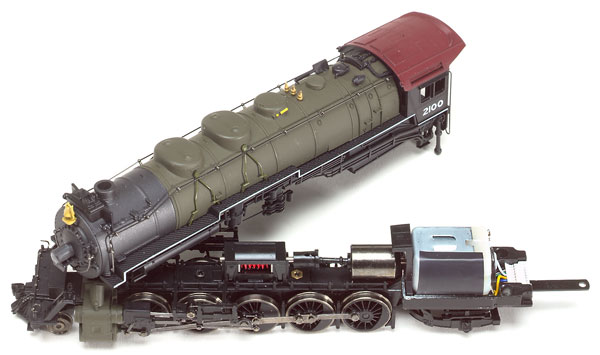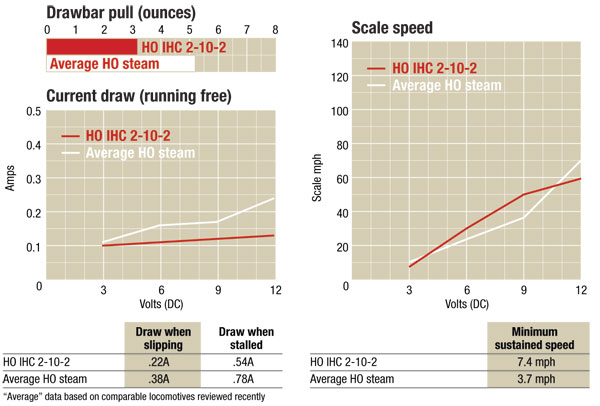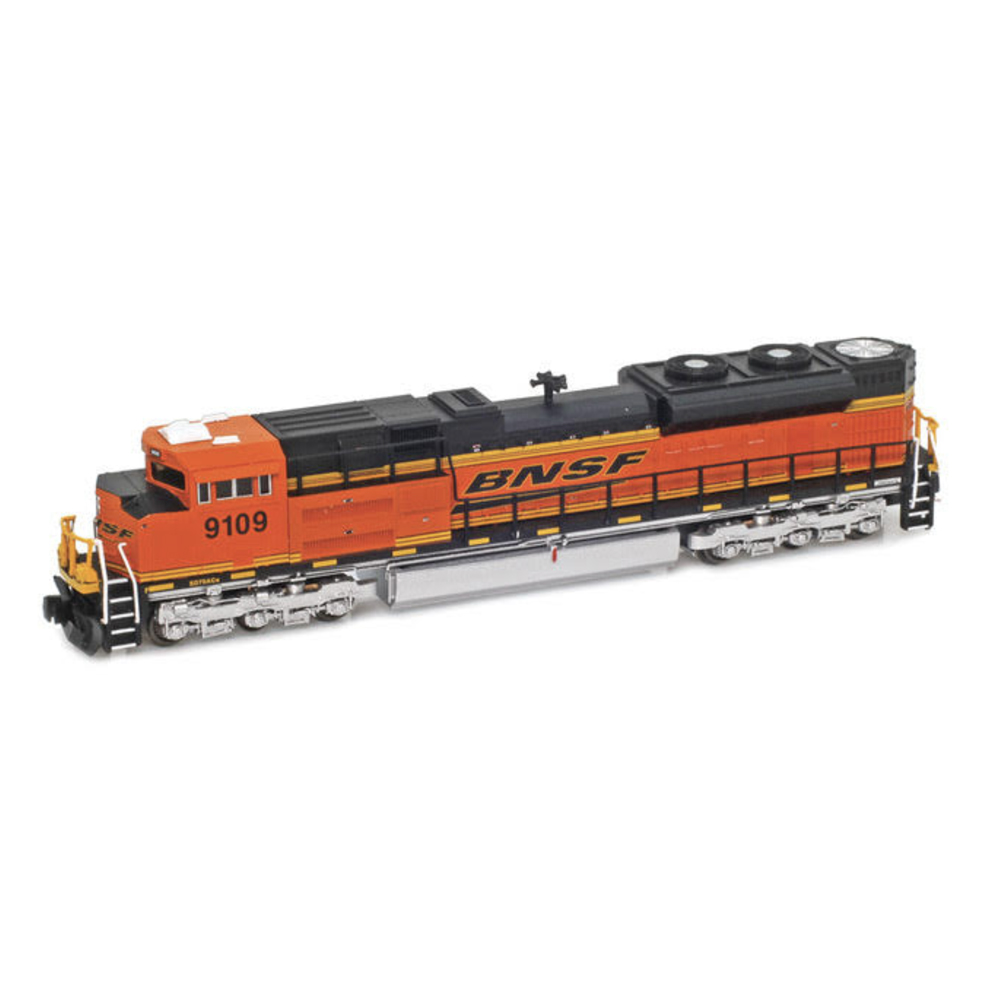A mixed heritage. This 2-10-2, from International Hobby Corp., combines parts from several different prototypes. The running gear is new and similar to that used on the Atchison, Topeka & Santa Fe’s 3800-class locomotives built in the 1920s. However, the cab, boiler, and tenders appear to be borrowed from IHC’s previous USRA (United States Railroad Administration) Heavy 4-8-2 locomotives.
The locomotive has scale 60″ drivers mounted on 66″ centers with 30″ lead and 36″ trailing truck wheels, This produces an overall engine length of 53 feet.
Each model comes decorated and includes one of two different tenders: a Vanderbilt type, like our sample, or a large, modern rectangular style with either a coal or oil fuel insert. The version provided follows the practices of the railroad it represents. All of the tenders ride on Commonwealth six-wheel, solid-bearing, trucks.
A six-page, well-illustrated instruc-tion sheet has three exploded iso-metric drawings and parts lists that show everything used in all the versions of the locomotive.
The firebox holds the can motor and flywheel that drives the gear-box riding on the middle driving axle. The metal side rods transfer the motion to the other drivers. Concealed phosphor-bronze wiper pickups collect current from eight of the drivers and two wheels on each tender truck.
The model has spoked drivers, Walschaerts valve gear, and a Hodges trailing truck. The first, third, and fourth drivers have soft springs, while the second and last sets are stiffer to help stabilize the moving engine.
All of the drivers have lateral side-play, and the middle set of drivers is blind (no flanges) so this big engine can operate on curves as sharp as 18″ radius. However, the 2-10-2 looks more realistic when it’s operating on wider curves.
A National Model Railroad Associ-ation eight-pin DCC socket and jumper plug is mounted on a printed-circuit (PC) board concealed inside the plastic tender. A plug and eight wires connect the tender to the locomotive to provide directional lighting at both ends. There’s plenty of space inside the tender to add a DCC sound decoder and speaker.
Our sample 2-10-2 was smoothly painted in Great Northern’s “Glacier Park” color scheme. The cab numbers, tender data, and two-color herald are crisp and opaque.
The driver tires and other wheel-sets are chemically blackened nickel-silver with RP-25 contours.
An IHC Magic-Mate coupler is mounted at the proper height on the tender. There’s no provision to add a working coupler on the pilot of this freight locomotive.
Our sample produced a drawbar pull of 3.2 ounces. That’s equivalent to 45 free-rolling freight cars on straight and level track.
Plenty of potential. Now that I’ve seen how well this 2-10-2 performs, I think it offers a lot of potential for new modelers and those with their own freelanced layouts. These models can easily be modified to produce a roster of big, distinctive home road steam locomotives.
While the model follows no specific prototype, its smooth-running mechanism and familiar lines capture the brutish look and power of a 2-10-2 drag engine.
Price: $129.98
Manufacturer
International Hobby Corp.
413 E. Allegheny Ave.
Philadelphia, PA 19134
www.ihc-hobby.com
Description
Ready-to-run plastic and metal 2-10-2 Santa Fe-type steam locomotive
Road names
Vanderbilt tender: Great Northern, Baltimore & Ohio, Southern Pacific, Union Pacific
Rectangular tender:
Atchison, Topeka & Santa Fe; Chicago, Burlington & Quincy; Boston & Maine; Pennsylvania RR; Southern Ry.
Boiler backhead in cab
Can motor with flywheel, geared to third driving axle
Constant, directional headlight and backup light
Coupled wheelbase: 95 feet,requires 14″ turntable
Drawbar pull: 3.3 ounces
Engine and tender weight: 26 ounces (engine alone 19 ounces)
IHC Magic-Mate coupler on tender (engine dummy coupler is .020″ high)
Minimum radius: 18″
RP-25 contour wheels (mounted in gauge)
















